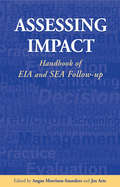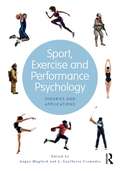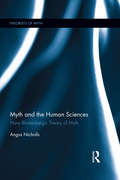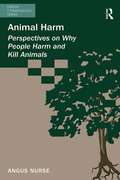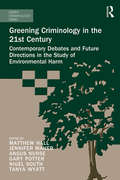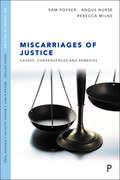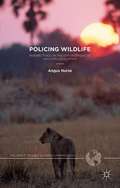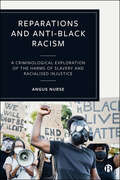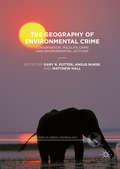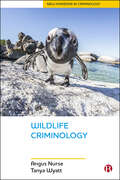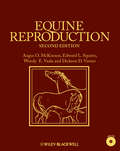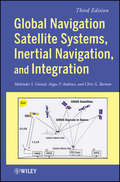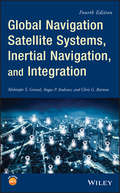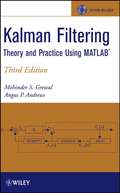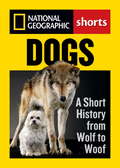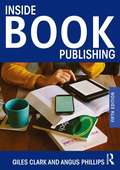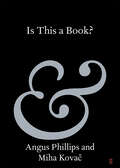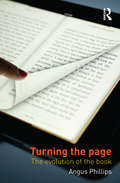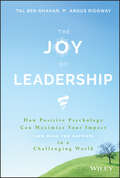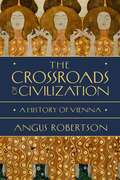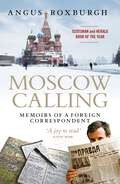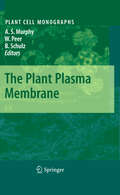- Table View
- List View
Assessing Impact: Handbook of EIA and SEA Follow-up
by Jos Arts Angus Morrison-SaundersWritten and edited by an authoritative team of internationally known experts in environmental impact assessment (EIA), this is the first book to present in a coherent manner the theory and practice of EIA and strategic environmental assessment (SEA) follow-up. Without some form of follow-up, the consequences of impact assessments and the environmental outcomes of development projects will remain unknown. Assessing Impact examines both EIA follow-up and the emerging practice of SEA follow-up, and showcases follow-up procedures in various countries throughout Europe, North America and Australasia. Theoretical and legislative perspectives are examined in the light of detailed case study examples, and the authors present a micro-, macro- and meta scale analysis of EIA practice ranging from individual plan and project level through to the jurisdictional level, as well as an analysis of the concept of EIA. Full coverage is given to the roles of proponents, both private and governmental, EIA regulators and the affected public in designing and executing follow-up programmes. This book is the must-have tool for impact assessment professionals, academics, regulators and proponents working on projects of all scales in all jurisdictions.
Sport, Exercise, and Performance Psychology: Theories and Applications
by J. Gualberto Cremades Angus MugfordThis book brings together world-class professionals to share theoretical understanding applied to sport, exercise and performance domains. It highlights how to be more effective in developing psychological skills, context and understanding for educators, students and professionals. From both academic and practitioner perspectives, this book takes readers through contextual understanding of this field of study and into a wide variety of important areas. Specifically, the chapters focus on the mind-body relationship and performance challenges, and on core mental skills applied across different sport, exercise and performance examples (including professional athletes, normal exercise populations and military service members). The final section expands the context into the role of relationships and performance in group settings to cover a broad practice of modern day applied performance psychology.
Myth and the Human Sciences: Hans Blumenberg's Theory of Myth (Theorists of Myth)
by Angus NichollsThis is the first book-length critical analysis in any language of Hans Blumenberg’s theory of myth. Blumenberg can be regarded as the most important German theorist of myth of the second half of the twentieth century, and his Work on Myth (1979) has resonated across disciplines ranging from literary theory, via philosophy, religious studies and anthropology, to the history and philosophy of science. Nicholls introduces Anglophone readers to Blumenberg’s biography and to his philosophical contexts. He elucidates Blumenberg’s theory of myth by relating it to three important developments in late nineteenth- and early twentieth-century German philosophy (hermeneutics, phenomenology and philosophical anthropology), while also comparing Blumenberg’s ideas with those of other prominent theorists of myth such as Vico, Hume, Schelling, Max Müller, Frazer, Sorel, Freud, Cassirer, Heidegger, Horkheimer and Adorno. According to Nicholls, Blumenberg’s theory of myth can only be understood in relation to the ‘human sciences,’ since it emerges from a speculative hypothesis concerning the emergence of the earliest human beings. For Blumenberg, myth was originally a cultural adaptation that constituted the human attempt to deal with anxieties concerning the threatening forces of nature by anthropomorphizing those forces into mythic images. In the final two chapters, Blumenberg’s theory of myth is placed within the post-war political context of West Germany. Through a consideration of Blumenberg’s exchanges with Carl Schmitt, as well as by analysing unpublished correspondence and parts of the original Work of Myth manuscript that Blumenberg held back from publication, Nicholls shows that Blumenberg’s theory of myth also amounted to a reckoning with the legacy of National Socialism.
Animal Harm: Perspectives on Why People Harm and Kill Animals (Green Criminology)
by Angus NurseWhy do people harm, injure, torture and kill animals? This book evaluates the reasons why these crimes are committed and outlines the characteristics of the animal offender. It considers ethical and value judgements made about animals and the tacit acknowledgement and justification of unacceptable criminal behaviour towards the harming of animals made by offenders. Situating animal abuse, wildlife crime, illegal wildlife trading and other unlawful activities directed at animals firmly within Green Criminology, the book contends that this is a distinct, multi-dimensional type of criminality which persists despite the introduction of relevant legislation. Taking a broad approach, the book considers the killing and harming of animals in an international context and examines the effectiveness of current legislation, policy and sentencing. Including a section on further reading and useful organizations, this book is a valuable exploration into perspectives on the responsibility owed by man to animals as part of broader ecological and legal concerns. It will interest criminologists, ecologists, animal protectionists and those interested in law and society and law and the environment.
Greening Criminology in the 21st Century: Contemporary debates and future directions in the study of environmental harm (Green Criminology)
by Matthew Hall Angus Nurse Gary Potter Nigel South Tanya Wyatt Jennifer MaherIn the 21st century, environmental harm is an ever-present reality of our globalised world. Over the last 20 years, criminologists, working alongside a range of other disciplines from the social and physical sciences, have made great strides in their understanding of how different institutions in society, and criminal justice systems in particular – respond – or fail to respond – to the harm imposed on ecosystems and their human and non-human components. Such research has crystallised into the rapidly evolving field of green criminology. This pioneering volume, with contributions from leading experts along with younger scholars, represents the state of the art in criminologists’ pursuit of understanding in the environmental sphere while at the same time challenging academics, lawmakers and policy developers to explore new directions in the study of environmental harm.
Miscarriages of Justice: Causes, Consequences and Remedies (Key Themes in Policing)
by Angus Nurse Sam PoyserMiscarriages of justice occur far more frequently than we realise and have the power to ruin people’s lives. It is crucial for criminal justice practitioners to understand them, given significant developments in recent years in law and police codes of practice. This text, part of the Key themes in policing textbook series, is written by three highly experienced authors with expertise in the fields of criminal investigation, forensic psychology and law and provides an up-to-date and comprehensive analysis of miscarriages of justice. They highlight difficulties in defining miscarriages of justice, examine their dimensions, forms, scale and impact and explore key cases and their causes. Discussing informal and formal remedies against miscarriages of justice, such as campaigns and the role of the media and the Court of Appeal and the Criminal Cases Review Commission (CCRC), they highlight criticism of the activities and decision-making of the latter and examine changes to police investigation in this area. Designed to incorporate ‘evidence-based policing’, each chapter provides questions reflecting on the issues raised in the text and suggestions for further reading.
Policing Wildlife
by Angus NurseWildlife crime is a fringe area of criminal justice, despite its importance as one of the highest value areas of global crime and its long term effects on ecosystems. This book examines the enforcement of wildlife law, one of the fastest growing areas of crime globally. It examines the extent of wildlife crime, the role of NGOs in policy development and practical law enforcement, and considers how justice systems deal with contemporary wildlife crime. Policing Wildlife importantly examines the pressing threat of organised crime and terror groups in wildlife crime. It highlights the weaker enforcement regimes and more lenient attitudes to wildlife crimes by the courts, despite the strong provisions which actually exist in wildlife law. Ultimately, it considers how enforcement regimes need to adapt to contemporary wildlife crime threats and argues for the better integration of wildlife crime into mainstream justice systems.
Reparations and Anti-Black Racism: A Criminological Exploration of the Harms of Slavery and Racialized Injustice
by Angus NurseThe Black Lives Matter movement has exposed the state violence and social devaluation that Black populations continue to suffer. Police shootings and incarceration inequalities in the US and UK are just two examples of the legacy of slavery today. This book offers a criminological exploration of the case for slavery and anti-Black racism reparations in the context of the enduring harms and differential treatment of Black citizens. Through critical analysis of legal arguments and reviewing recent court actions, it refutes the policy perspectives that argue against reparations. Highlighting the human rights abuses inherent to and arising from slavery and ongoing racism, this book calls for governments to take responsibility for the impact of ongoing racialized injustice.
The Geography of Environmental Crime
by Matthew Hall Gary R. R. Potter Angus NurseThis book critically examines both theory and practice around conservation crimes. It engages with the full complexity of environmental crimes and different responses to them, including: poaching, conservation as a response to wildlife crime, forest degradation, environmental activism, and the application of scientific and situational crime prevention techniques as preventative tools to deal with green crime. Through the contributions of experts from both the social and ecological sciences, the book deals with theoretical and practical considerations that impact on the effectiveness of contemporary environmental criminal justice. It discusses the social construction of green crimes and the varied ways in which poaching and other conservation crimes are perceived, operate and are ideologically driven, as well as practical issues in environmental criminal justice. With contributions based in varied ideological perspectives and drawn from a range of academic disciplines, this volume provides a platform for scholars to debate new ideas about environmental law enforcement, policy, and crime prevention, detection and punishment.
Wildlife Criminology (New Horizons in Criminology)
by Angus Nurse Tanya WyattThis illuminating study explores crimes against, and involving, wildlife and the resultant social harms. The authors go well beyond basic conceptions of animal-related crime, such as illicit trade, for a deeper exploration of wildlife criminology, using a novel approach that combines philosophical, legal and criminological perspectives. They shed light on both legal and illegal harms, including blood sports, wildlife as food and abuse in zoos, and consider the potential connections with inter-human crimes. This is a unique treatment of wildlife as victims of crime and a consideration of their rights as sentient beings that sets new horizons for the concept of wildlife criminology.
Equine Reproduction
by Edward L. Squires Wendy E. Vaala Angus O. Mckinnon Dickson D. VarnerNow in a much-anticipated two-volume new edition, this gold-standard reference stands as the most comprehensive and authoritative text on equine reproduction. Serving theriogenologists, practitioners and breeders worldwide as a one-stop resource for the reproductive assessment and management of equine patients, Equine Reproduction, Second Edition provides detailed information on examination techniques, breeding procedures, pregnancy diagnosis and management, reproductive tract diseases and surgery, and foaling. A companion CD offers hundreds of images from the book in color. For the Second Edition, the stallion, mare and foal sections have been thoroughly updated and revised to include the latest information on every subject. New topics include discussion of nutritional and behavioral factors in the broodmare and stallion, parentage testing, fetal sexing and the health and management of older foals, weanlings and yearlings. Additionally, this outstanding Second Edition features a new section on assisted reproductive techniques, including detailed information on artificial insemination, in-vitro fertilization, embryo transfer and technology.
Global Navigation Satellite Systems, Inertial Navigation, and Integration
by Mohinder S. Grewal Angus P. Andrews Chris G. BartoneAn updated guide to GNSS, and INS, and solutions to real-world GNSS/INS problems with Kalman filtering Written by recognized authorities in the field, this third edition of a landmark work provides engineers, computer scientists, and others with a working familiarity of the theory and contemporary applications of Global Navigation Satellite Systems (GNSS), Inertial Navigational Systems, and Kalman filters. Throughout, the focus is on solving real-world problems, with an emphasis on the effective use of state-of-the-art integration techniques for those systems, especially the application of Kalman filtering. To that end, the authors explore the various subtleties, common failures, and inherent limitations of the theory as it applies to real-world situations, and provide numerous detailed application examples and practice problems, including GNSS-aided INS (tightly and loosely coupled), modeling of gyros and accelerometers, and SBAS and GBAS. Drawing upon their many years of experience with GNSS, INS, and the Kalman filter, the authors present numerous design and implementation techniques not found in other professional references. The Third Edition includes: Updates on the upgrades in existing GNSS and other systems currently under development Expanded coverage of basic principles of antenna design and practical antenna design solutions Expanded coverage of basic principles of receiver design and an update of the foundations for code and carrier acquisition and tracking within a GNSS receiver Expanded coverage of inertial navigation, its history, its technology, and the mathematical models and methods used in its implementation Derivations of dynamic models for the propagation of inertial navigation errors, including the effects of drifting sensor compensation parameters Greatly expanded coverage of GNSS/INS integration, including derivation of a unified GNSS/INS integration model, its MATLAB® implementations, and performance evaluation under simulated dynamic conditions The companion website includes updated background material; additional MATLAB scripts for simulating GNSS-only and integrated GNSS/INS navigation; satellite position determination; calculation of ionosphere delays; and dilution of precision.
Global Navigation Satellite Systems, Inertial Navigation, and Integration
by Mohinder S. Grewal Angus P. Andrews Chris G. BartoneCovers significant changes in GPS/INS technology, and includes new material on GPS, GNSSs including GPS, Glonass, Galileo, BeiDou, QZSS, and IRNSS/NAViC, and MATLAB programs on square root information filtering (SRIF) This book provides readers with solutions to real-world problems associated with global navigation satellite systems, inertial navigation, and integration. It presents readers with numerous detailed examples and practice problems, including GNSS-aided INS, modeling of gyros and accelerometers, and SBAS and GBAS. This revised fourth edition adds new material on GPS III and RAIM. It also provides updated information on low cost sensors such as MEMS, as well as GLONASS, Galileo, BeiDou, QZSS, and IRNSS/NAViC, and QZSS. Revisions also include added material on the more numerically stable square-root information filter (SRIF) with MATLAB programs and examples from GNSS system state filters such as ensemble time filter with square-root covariance filter (SRCF) of Bierman and Thornton and SigmaRho filter. Global Navigation Satellite Systems, Inertial Navigation, and Integration, 4th Edition provides: Updates on the significant upgrades in existing GNSS systems, and on other systems currently under advanced development Expanded coverage of basic principles of antenna design, and practical antenna design solutions More information on basic principles of receiver design, and an update of the foundations for code and carrier acquisition and tracking within a GNSS receiver Examples demonstrating independence of Kalman filtering from probability density functions of error sources beyond their means and covariances New coverage of inertial navigation to cover recent technology developments and the mathematical models and methods used in its implementation Wider coverage of GNSS/INS integration, including derivation of a unified GNSS/INS integration model, its MATLAB implementations, and performance evaluation under simulated dynamic conditions Global Navigation Satellite Systems, Inertial Navigation, and Integration, Fourth Edition is intended for people who need a working knowledge of Global Navigation Satellite Systems (GNSS), Inertial Navigation Systems (INS), and the Kalman filtering models and methods used in their integration.
Kalman Filtering
by Mohinder S. Grewal Angus P. AndrewsThis book provides readers with a solid introduction to the theoretical and practical aspects of Kalman filtering. It has been updated with the latest developments in the implementation and application of Kalman filtering, including adaptations for nonlinear filtering, more robust smoothing methods, and developing applications in navigation. All software is provided in MATLAB, giving readers the opportunity to discover how the Kalman filter works in action and to consider the practical arithmetic needed to preserve the accuracy of results.Note: CD-ROM/DVD and other supplementary materials are not included as part of eBook file.An Instructor's Manual presenting detailed solutions to all the problems in the book is available from the Wiley editorial department -- to obtain the manual, send an email to ialine@wiley.com.
Dogs
by Evan Ratliff Angus PhillipsThree riveting essays by some of National Geographic magazine's most highly esteemed writers explore the canine-human relationship and what scientists are learning from dogs. "Dogs and people, people and dogs: It's a love story so old no one knows how it started," wrote Angus Phillips in "Wolf to Woof." Filled with cutting edge research covering everything from domestication, breeding, and the bonds of devotion, these linked stories are custom-selected for everyone who loves dogs. Filled with amazing facts, colorful anecdotes and accessible science, this affordable ebook provides a fascinating guide to some of the world's most beloved creatures.
Dogs: A Short History from Wolf to Woof
by Evan Ratliff Angus Phillips"Dogs and people, people and dogs: It's a love story so old no one knows how it started," wrote Angus Phillips in "Wolf to Woof." Filled with cutting edge research covering everything from domestication, breeding, and the bonds of devotion, these linked stories are custom-selected for everyone who loves dogs. Filled with amazing facts, colorful anecdotes and accessible science, this affordable ebook provides a fascinating guide to some of the world's most beloved creatures.
Inside Book Publishing
by Angus Phillips Giles ClarkNow in its fifth edition, Inside Book Publishing remains the classic introduction to the book publishing industry, being both a manual for the profession for over two decades and the bestselling textbook for students of publishing. This new edition has been fully updated to respond to the rapid changes in the market and technology. Now more global in its references and scope, the book explores the tensions and trends affecting the industry, including the growth of ebooks, self-publishing, and online retailing, and new business models and workflows. The book provides excellent overviews of the main aspects of the publishing process, including commissioning, product development, design and production, marketing, sales and distribution. The book remains essential reading for publishing students, those seeking a career in publishing, recent entrants to the industry, and authors seeking an insider's view. The accompanying website supports the book by providing up-to-date and relevant content.
Inside Book Publishing
by Angus Phillips Giles ClarkNow fully revised and updated for its sixth edition, Inside Book Publishing is the classic introduction to the book publishing industry. Giles Clark and Angus Phillips offer authoritative coverage of all sectors of the industry from commercial fiction and non-fiction to educational publishing and academic journals. They reveal how publishers continue to adapt to a fast-changing and highly interconnected world, in which printed books have proved resilient alongside ebooks and the growth in audio. Major themes are explored, including the development of digital products and the use of social media in book marketing; and those that affect publishers’ businesses such as the rise of internet retailing, rental models for student textbooks, and open access where academic content is free to the user. Case studies from industry experts give fascinating perspectives on topics such as crowdfunding, self-publishing and how authors can market themselves. The book provides excellent overviews of the main aspects of the publishing process: commissioning authors, product development, design and production, marketing, sales and distribution. As a manual for those in the profession and a guide for the potential publishers of the future, Inside Book Publishing remains a seminal work for anyone with an interest in the industry. It will also be of interest to authors seeking an insider’s view of this exciting industry. Companion website: www.insidebookpublishing.com
Inside Book Publishing
by Angus Phillips Giles ClarkNow fully revised and updated for its seventh edition, Inside Book Publishing is the classic introduction to the book publishing industry.The book provides excellent overviews of the main aspects of the publishing process: commissioning authors, product development, design and production, marketing, and sales. Angus Phillips and Giles Clark offer authoritative and up-to-date coverage of all sectors of the industry from commercial fiction to educational publishing and academic journals. They reveal how publishers continue to adapt to a fast-changing and highly interconnected world, in which printed books have proved resilient alongside ebooks and the growth in audio. The topics explored include AI, social media in marketing, sustainable book production, open access for research, and diversity, equity and inclusion. International case studies from industry experts give perspectives on, for example, comic books, children’s picture books, women in Indian publishing and the Korean literary wave.As a manual for those in the profession and a guide for the publishers of the future, this book remains a seminal work for anyone with an interest in the industry. It will also be of interest to authors seeking an insider’s view of this exciting industry.The book is supported by online resources, including a glossary, a further reading list and links to a range of online resources, available at www.routledge.com/9781032516554.
Is This a Book? (Elements in Publishing and Book Culture)
by Angus Phillips Miha KovačThis is a book about the book. Is this a book? is a question of wide appeal and interest. With the arrival of ebooks, digital narratives and audiobooks, the time is right for a fresh discussion of what is a book. Older definitions that rely solely on print no longer work, and as the boundaries of the book have been broken down, this volume offers a fresh and lively discussion of the form and purpose of the book. How does the audiobook fit into the book family? How is the role of reading changing in the light of digital developments? Does the book still deserve a privileged place in society? The authors present a dynamic model of the book and how it lives on in today's competitive media environment.
Turning the Page: The Evolution of the Book
by Angus PhillipsThis is an exciting period for the book, a time of innovation, experimentation, and change. It is also a time of considerable fear within the book industry as it adjusts to changes in how books are created and consumed. The movement to digital has been taking place for some time, but with consumer books experiencing the transition, the effects of digitization can be clearly seen to everybody. In Turning the Page Angus Phillips analyses the fundamental drivers of the book publishing industry - authorship, readership, and copyright - and examines the effects of digital and other developments on the book itself. Drawing on theory and research across a range of subjects, from business and sociology to neuroscience and psychology, and from interviews with industry professionals, Phillips investigates how the fundamentals of the book industry are changing in a world of ebooks, self-publishing, and emerging business models. Useful comparisons are also made with other media industries which have undergone rapid change, such as music and newspapers. This book is an ideal companion for anyone wishing to understand the transition of the book, writing and publishing in recent years and will be particularly relevant to students studying publishing, media and communications.
The Joy of Leadership: How Positive Psychology Can Maximize Your Impact (AND MAKE YOU HAPPIER) in a Challenging World
by Tal Ben-Shahar Angus RidgwayThe difference between flourishing and floundering is 10X. The difference between quantity and quality is a factor of 10. The difference in levels of engagement is exponential. People functioning at the highest level are what the authors call 10x leaders. Research on these leaders consistently brought up five major strengths. This book teaches readers to become a 10x leader using these five key areas, the SHARP framework. <p><p> ● Strengths: 10X leaders stop trying to eliminate weaknesses and learn to focus on their strengths <p> ● Health: 10X leaders stop trying to eliminate stress and learn how to integrate periods of restoration <p> ● Absorption: 10X leaders stop waiting for the lightning of focus and creativity to strike and learn how to achieve consistent engagement and presence <p> ● Relationships: 10X leaders stop trying to exert power and control and learn to cultivate healthy relationships through positivity and authenticity <p> ● Purpose: 10X leaders stop grinding out tasks and learn how to find meaning and commitment in everything they do <p> The 10X elixir of peak performance comes not from focusing on just one of these areas, but from learning to light the fire of all five aspects of SHARP and functioning naturally with them on a daily basis. If you just cultivate one or two aspects of leadership skills you are unlikely to succeed. If one of the five isn’t taken care of it affects the performance of the whole. But if you focus on all five areas, you will not only be more likely to find what helps you most, you have the best chance of enjoying the synergy of performance multiplication.
The Crossroads of Civilization: A History of Vienna
by Angus RobertsonA rich and illuminating history of the world capital that has transformed art, culture, and politics.Vienna is unique amongst world capitals in its consistent international importance over the centuries. From the ascent of the Habsburgs as Europe's leading dynasty to the Congress of Vienna, which reordered Europe in the wake of Napoleon's downfall, to bridge-building summits during the Cold War, Vienna has been the scene of key moments in world history. Scores of pivotal figures were influenced by their time in Vienna, including: Empress Maria Theresa, Count Metternich, Bertha von Suttner, Theodore Herzl, Gustav Mahler, Adolf Hitler, Josef Stalin, John F. Kennedy, and many others. In a city of great composers, artists, and thinkers, it is here that both the most positive and destructive ideas of recent history have developed. From its time as the capital of an imperial superpower, through war, dissolution, dictatorship to democracy Vienna has reinvented itself and its relevance to the rest of the world.
Moscow Calling: Memoirs of a Foreign Correspondent
by Angus RoxburghA British journalist offers an intimate view of Russia from the Cold War to the rise of Putin through his personal experiences as a correspondent. In the course of the past 45 years, Angus Roxburgh has translated Tolstoy, met four successive Russian presidents and been jinxed by a Siberian shaman. He has come under fire in war zones and been arrested by Chechen thugs. During the Cold War he was wooed by the KGB, who then decided he would make a lousy spy and expelled him from the country. In Moscow Calling, Roxburgh presents his Russia: not the Russia of news reports, but a quirky, exasperating, beautiful, tumultuous world that in four decades has changed completely—and not at all. Roxburgh narrates an incredible journey from the dark, fearful days of communism and his adventures as a correspondent covering the Soviet Union&’s collapse to his frustrating work as a media consultant to Putin&’s Kremlin. His memoir offers a unique, fascinating and at times hilarious insight into a country that today, more than ever, is of global political significance.
The Plant Plasma Membrane
by Burkhard Schulz Wendy Peer Angus S. MurphyIn plant cells, the plasma membrane is a highly elaborated structure that functions as the point of exchange with adjoining cells, cell walls and the external environment. Transactions at the plasma membrane include uptake of water and essential mineral nutrients, gas exchange, movement of metabolites, transport and perception of signaling molecules, and initial responses to external biota. Selective transporters control the rates and direction of small molecule movement across the membrane barrier and manipulate the turgor that maintains plant form and drives plant cell expansion. The plasma membrane provides an environment in which molecular and macromolecular interactions are enhanced by the clustering of proteins in oligimeric complexes for more efficient retention of biosynthetic intermediates, and by the anchoring of protein complexes to promote regulatory interactions. The coupling of signal perception at the membrane surface with intracellular second messengers also involves transduction across the plasma membrane. Finally, the generation and ordering of the external cell walls involves processes mediated at the plant cell surface by the plasma membrane. This volume is divided into three sections. The first section describes the basic mechanisms that regulate all plasma membrane functions. The second describes plasma membrane transport activity. The final section of the book describes signaling interactions at the plasma membrane. These topics are given a unique treatment in this volume, as the discussions are restricted to the plasma membrane itself as much as possible. A more complete knowledge of the plasma membrane's structure and function is essential to current efforts to increase the sustainability of agricultural production of food, fiber, and fuel crops.
